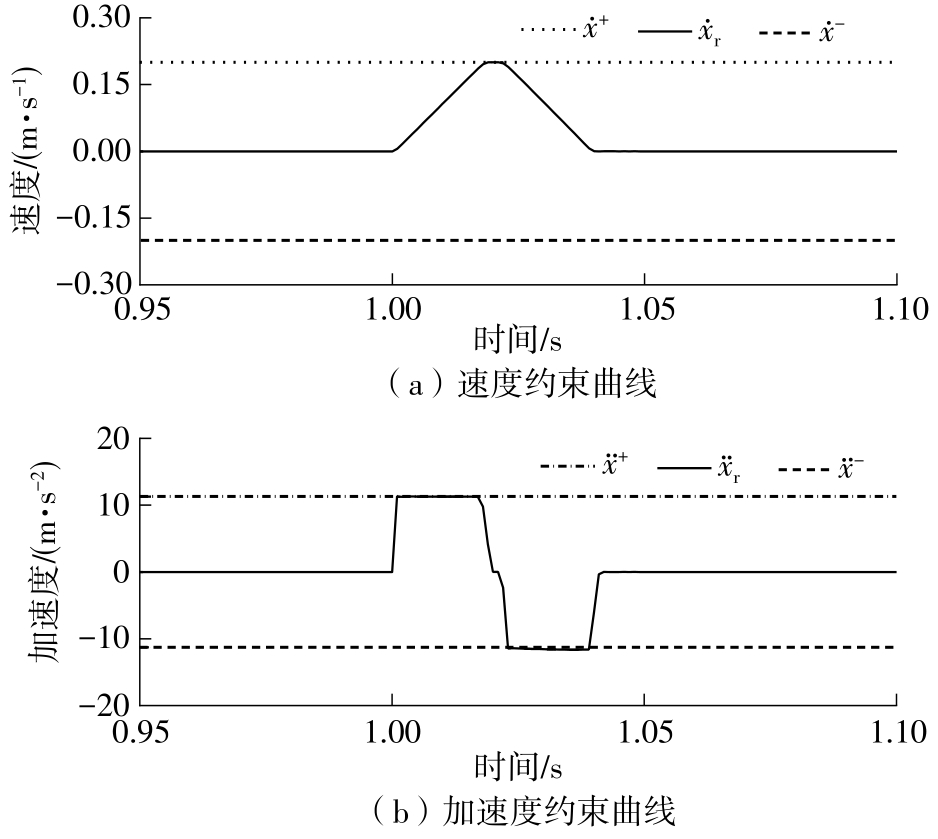| 1 |
杜波,张步斌,冯海平 .矿井提升设备的发展现状及趋势[J].矿山机械,2016,44(6):1-7.
|
|
DU Bo, ZHANG Bubin, FENG Haiping .Development status and tendency of mine hoisting equipments[J].Mining & Processing Equipment,2016,44(6):1-7.
|
| 2 |
李福勇,齐学海,安传栋 .基于DMC-PID双环控制的提升机恒减速制动系统研究[J].矿山机械,2022,50(11):21-26.
|
|
LI Fuyong, QI Xuehai, AN Chuandong .Research on constant deceleration braking system of hoist based on DMC-PID double-loop control[J].Mining & Processing Equipment,2022,50(11):21-26.
|
| 3 |
李明航,王效志,张君勇,等 .提升机恒减速制动系统控制策略研究与设计[J].煤矿机械,2022,43(9):10-13.
|
|
LI Minghang, WANG Xiaozhi, ZHANG Junyong,et al .Research and design of control strategy for constant deceleration braking system of windlass[J].Coal Mine Machinery,2022,43(9):10-13.
|
| 4 |
HAN W, XIONG L, YU Z .Braking pressure control in electro-hydraulic brake system based on pressure estimation with nonlinearities and uncertainties[J].Mechanical Systems and Signal Processing,2019,131:703-727.
|
| 5 |
HWANG M C, HU X H .A robust position/force learning controller of manipulators via nonlinear H ∞ control and neural networks[J].IEEE Transactions on Systems,Man,and Cybernetics,Part B (cybernetics),2000,30(2):310-321.
|
| 6 |
樊绍巍,宗华,邱景辉,等 .机器人灵巧手柔性关节自适应阻抗控制[J].电机与控制学报,2012,16(12):78-86.
|
|
FAN Shaowei, ZONG Hua, QIU Jinghui,et al .Adaptive impedance control for dexterous robot hand with elastic joint[J].Electric Machines and Control,2012,16(12):78-86.
|
| 7 |
YUAN S, QING Y, ZHANG Z,et al .Asymptotic switched composite adaptive control with application to robotic interaction tasks[J].International Journal of Robust and Nonlinear Control,2023,33(9):404-422.
|
| 8 |
徐文福,周瑞兴,孟得山 .空间机器人在轨更换ORU的力/位混合控制方法[J].宇航学报,2013,34(10):1353-1361.
|
|
XU Wenfu, ZHOU Ruixing, MENG Deshan .A hybrid force/position control method of space robot performing On-Orbit ORU Replacement[J].Journal of Astronautics,2013,34(10):1353-1361.
|
| 9 |
DAI K, ZHU Z, SHEN G,et al .Switched safe tracking control of chain tensioning system with multiple disturbances and kinematic constraints[J].IEEE/ASME Transactions on Mechatronics,2023,28(2):825-837.
|
| 10 |
ZHANG X .Robust integral sliding mode control for uncertain switched systems under arbitrary switching rules[J].Nonlinear Analysis:Hybrid Systems,2020,37:100900/1-20.
|
| 11 |
SUN T R, PENG L, CHENG L,et al .Stability-guaranteed variable impedance control of robots based on approximate dynamic inversion[J].IEEE Transactions on Systems,Man,and Cybernetics:Systems,2021,51(7):4193-4200.
|
| 12 |
BONCHIS A, CORKE P I, RYE D C,et al .Variable structure methods in hydraulic servo systems control[J].Automatic,2001,37(4):589-595.
|
| 13 |
孙常春,靖新,刘玉忠 .带有非线性扰动的不确定切换系统鲁棒控制[J].电机与控制学报,2006,10(2):212-215,221.
|
|
SUN Changchun, JING Xin, LIU Yuzhong .Robust control for uncertain switched systems with nonlinear disturbances[J].Electric Machines and Control,2006,10(2):212-215,221.
|
| 14 |
李升波,李克强,王建强,等 .非奇异快速的终端滑模控制方法[J].信息与控制,2009,38(1):1-8.
|
|
LI Shengbo, LI Keqiang, WANG Jianqiang,et al .Nonsingular and fast terminal sliding mode control method[J].Information and Control,2009,38(1):1-8.
|
| 15 |
LIAN S K, MENG W, LIN Z M, al et,Adaptive attitude control of a quadrotor using fast nonsingular terminal sliding mode[J].IEEE Transactions on Industrial Electronics,2022,69(2):1597-1607.
|
| 16 |
袁明星 .机电系统运动学和动力学约束下的轨迹规划研究[D].杭州:浙江大学,2019.
|
| 17 |
CHEN Z, HELIAN B B, ZHOU Y,et al .An integrated trajectory planning and motion control strategy of a variable rotational speed pump-controlled electro-hydraulic Actuator[J].IEEE/ASME Transactions on Mechatronics,2022,28(1):588-597.
|
| 18 |
YUAN M X, CHEN Z, YAO B,et al .An improved online trajectory planner with stability-guaranteed critical test curve algorithm for generalized parametric constraints[J].IEEE/ASME Transactions on Mechatronics,2018,23(5):2459-2469.
|
| 19 |
WANG L Y, CHANI T Y, ZHAI L F .Neural-network-based terminal sliding-mode control of robotic manipulators including actuator dynamics[J].IEEE Transactions on Industrial Electronics,2009,56(9):3296-3304.
|

















